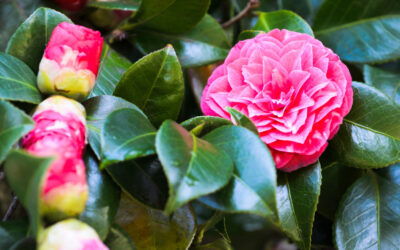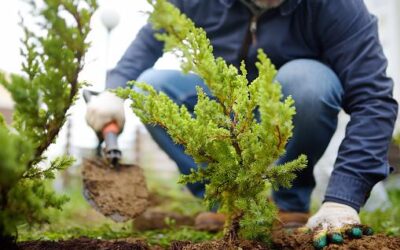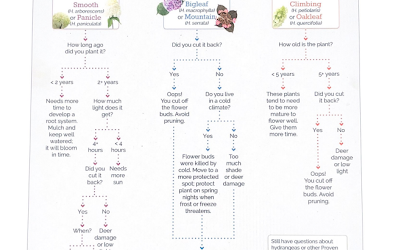To borrow a phrase from a famous 90’s girl group: “People of the world, spice up your life…” by planting hot pepper plants in your garden! Pepper plants are always a popular addition to vegetable gardens because they are easy to grow. Spicy varieties are no exception, and from the mild pepperoncini to the eye-watering Carolina Reaper, there’s a plant for everyone.
What Makes Hot Peppers Spicy?
Capsaicin is a chemical compound found naturally in peppers. The more capsaicin a pepper has, the spicier it is. Heat levels are measured in Scoville Heat Units (SHU), a scale first developed by Wilbur Scoville in 1912 by measuring how much he had to dilute the oil of a pepper with sugar water before no heat could be detected. Pure capsaicin has a rating of at least 15,000,000 SHU.
Check out the SHU of some of the pepper plants we stock in our vegetable section:
| Pepper Variety | Scoville Heat Units (SHU) |
|---|---|
| Bell | 0 |
| Banana | 0 – 500 |
| Pepperoncini | 100 – 500 |
| Anaheim | 500 – 2,500 |
| Poblano | 1,000 – 2,000 |
| Tabasco | 2,000 – 5,000 |
| Jalapeño | 2,500 – 8,000 |
| Serrano | 10,000 – 23,000 |
| Cayenne | 30,000 – 50,000 |
| Thai | 50,000 – 100,000 |
| Habanero | 100,000 – 250,000 |
| Trinidad Scorpion | 800,000 – 1,463,700 |
| Ghost | 1,000,000+ |
| Carolina Reaper | 2,200,000+ |
Carolina Reapers are currently the hottest peppers in the world, but some pepper super fans are working on breeding even spicier varieties!
Meet Ed Currie, the creator of the Carolina Reaper! And he’s not done yet…
Growing & Caring For Hot Pepper Plants
Hot pepper plants are very easy to grow.
| Hardiness Zone | Zone 9-11 |
|---|---|
| Sun | Full sun |
| Water | Soil should stay evenly moist but not waterlogged |
| Soil | Well-draining, sandy loam Amend heavy clay with EarthMixⓇ Organic Garden™ Premium Topsoil Blend |
| Self-Pollinating | Yes; only need one plant to ensure successful pollinating |
Choose good neighbors for your pepper plants. With companion planting, your hot peppers will receive the benefits of your other plants’ naturally pest-repelling and beneficial insect-attracting qualities. Plant them near basil, chives, dill, rosemary, geraniums, marigolds, and nasturtium. However, never plant hot peppers and bell peppers close together! These easily cross-pollinate, leading to your bell peppers taking on some heat.
Sometimes peppers develop blossom end rot, which simply means that the bottom of the growing vegetable rots. This is caused by a calcium deficiency and is easily prevented! Apply EspomaⓇ Organic Tomato-toneⓇ when you first plant and then again twice a month during their growing season. You can also apply Rot-StopⓇ Tomato Blossom Set Spray from BonideⓇ.
Make sure you have a support ready for your hot pepper plants. As the stems become heavy with all the peppers growing on them, they start to lean over. A tomato cage or other stake will help them stand up strong.
Harvesting Hot Pepper Plants
Hot pepper plants can often produce new vegetables up to the first frost. When to harvest your newly grown hot peppers is really a matter of preference. Hot peppers can be picked at any time, but their flavor is only fully developed at maturity. You can harvest frequently to have a large crop, but you may sacrifice taste. You can also harvest only when they are completely ripe and full of flavor, but you may not get as many peppers.
Don’t pull on the pepper to remove it from the plant. Instead, cut it from the branch with garden shears. Leave a little bit of the stem attached to the top. Make sure you’re wearing gloves in order to avoid burning your skin, and don’t rub your eyes until after you wash your hands!
Find Hot Pepper Plants At Your Local Garden Center
Martin’s Home & Garden carries a wide variety of hot pepper plants and other vegetables every spring! Visit our Murfreesboro store today!


